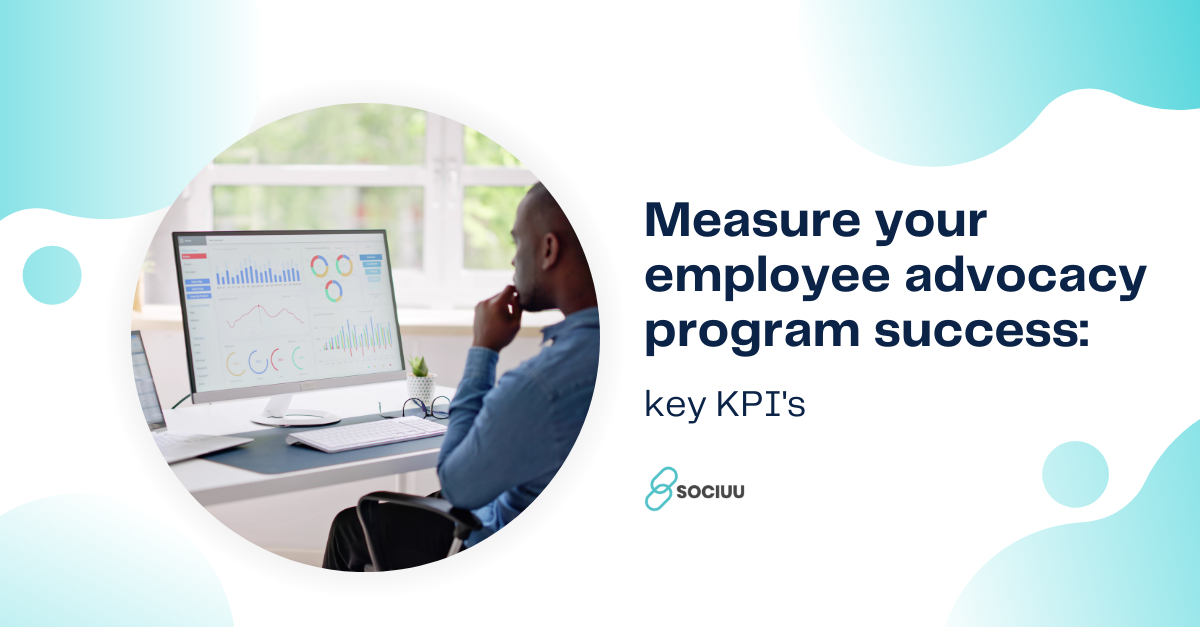
How to measure your employee advocacy program success: key KPI’s
Leveraging the power of employee advocacy has become a cornerstone of successful marketing strategies for businesses worldwide. However, implementing an employee advocacy program is just the first step. To truly gauge its effectiveness and optimize its impact, businesses need to establish clear Key Performance Indicators (KPIs) tailored to their objectives and measure them consistently. In this blog post, we’ll delve into the essential KPIs that can help you assess and enhance your employee advocacy program’s success.
1. Engagement Metrics
Participation/Adoption Rate:
- What to measure: The percentage of employees actively involved in advocacy activities.
- Why it matters: Indicates the overall engagement and enthusiasm of your workforce.
Activity Frequency and Engagement:
- What to measure: How often and how many employees participate in sharing content or engaging in advocacy initiatives.
- Why it matters: A higher frequency often correlates with a more ingrained advocacy culture and frequent sharing opportunities.
Feedback and Sentiment:
- What to measure: Gather employee feedback through surveys or sentiment analysis.
- Why it matters: Understanding how employees feel about the program provides insights into its long-term viability.
2. Reach and Influence
Total Reach:
- What to measure: The number of views and clicks content receives through employee sharing.
- Why it matters: Reflects the program’s success in extending your brand’s reach organically.
Social Shares and Mentions:
- What to measure: Volume of shares, mentions, and tags across social platforms.
- Why it matters: Indicates the level of enthusiasm in sharing content within employees’ networks.
3. Content Effectiveness
Click per share
- What to measure: The percentage of stakeholders clicking on links shared by employees.
- Why it matters: Indicates the relevance and appeal of the content being shared.
Top-Performing Content
- What to measure: Identify the most popular and engaging content among employees.
- Why it matters: Allows for refining content strategies based on what resonates most.
4. Brand Reputation and Perception
Customer Feedback and Referrals:
- What to measure: Monitor customer reviews and referrals originating from employee recommendations.
- Why it matters: Shows the direct impact on customer satisfaction and loyalty.
5. Business Impact Metrics
Lead Generation and Sales:
- What to measure: Initial contact, visibility – quantify potential leads, conversions, and revenue attributed to employee advocacy.
- Why it matters: Ties advocacy efforts directly to the company’s bottom line.
Cost-Effectiveness:
- What to measure: Evaluate the Earned Media Value or return on investment (ROI).
- Why it matters: Ensures that the program is delivering value efficiently compared to other marketing channels.
Employee Retention and Satisfaction:
- What to measure: Assess the impact of advocacy initiatives on employee morale and retention rates.
- Why it matters: A positive correlation with employee satisfaction suggests a healthy work culture.
By meticulously tracking these KPIs, you’ll gain a comprehensive understanding of your employee advocacy program’s effectiveness. Remember, it’s not just about the numbers; it’s about fostering a culture where employees are not just workers but enthusiastic brand advocates. The true success of an advocacy program lies in the symbiotic relationship between organizational goals and the authentic, amplified voice of your employees.
Check out our blog and social media pages to get to know more on how to get your employee advocacy program to the next level!